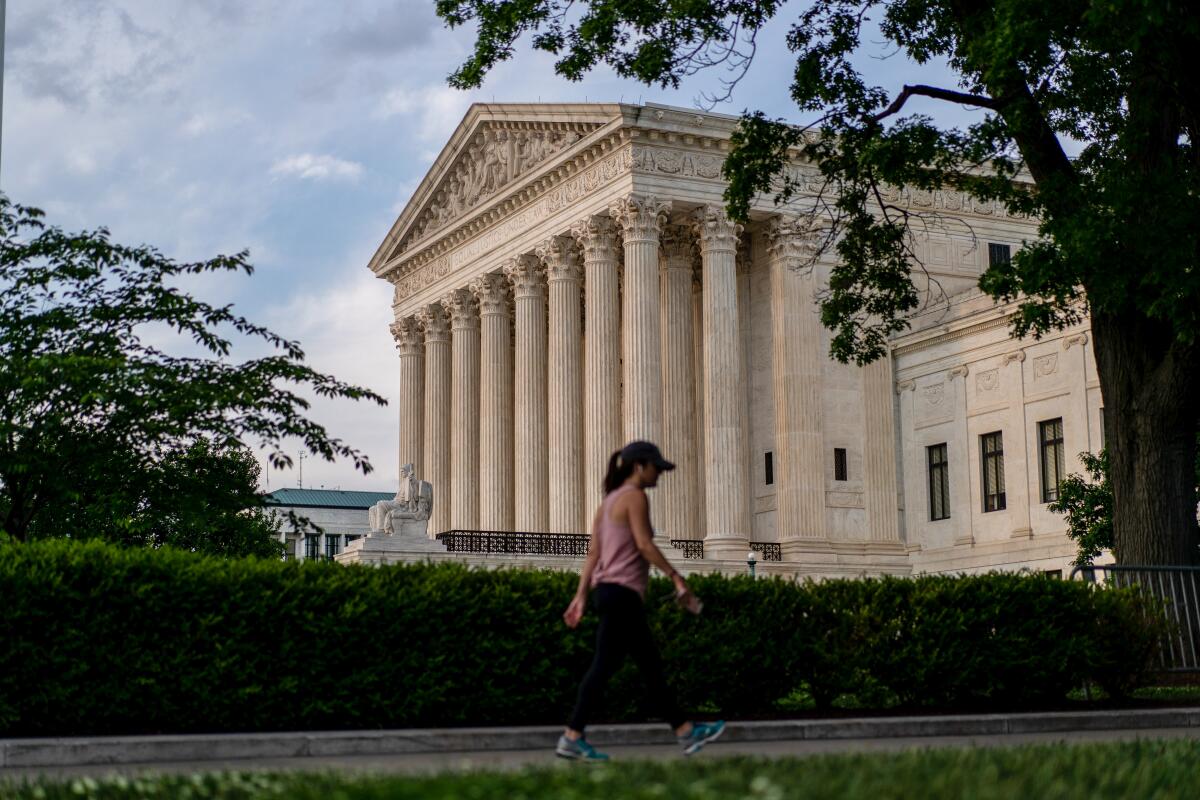In win for GOP, Supreme Court blocks new Black-majority district in Alabama

WASHINGTON — In its first decision on this decade’s congressional redistricting, the Supreme Court on Monday sided with Alabama’s Republicans and blocked the creation of a new Black-majority district in the state.
By a 5-4 vote, the justices set aside for now a ruling by a panel of three judges, two of whom were President Trump appointees, who said the state Republican-controlled Legislature could have and should have drawn a second district that could elect a Black candidate to the U.S. House of Representatives.
The court’s five most conservative justices, all Republican appointees, voted to block the order and to hear arguments later on the legal issue. Chief Justice John G. Roberts Jr. dissented in his own opinion. The three liberal justices, all of whom were Democratic appointees, filed a separate, lengthy dissent.
Justice Brett M. Kavanaugh said in a concurring opinion that the state should not be forced to redraw its districts within a few weeks, as required by the lower court.
“Late judicial tinkering with election laws can lead to disruption and to unanticipated and unfair consequences for candidates, political parties and voters, among others,” he wrote in Merrill vs. Milligan.
Justice Elena Kagan said the high court should not have intervened after the three-judge panel had closely examined the case. That court “here did everything right under the law existing today. Staying its decision forces Black Alabamians to suffer what under that law is clear vote dilution,” she wrote in an opinion joined by Justices Stephen G. Breyer and Sonia Sotomayor.
Alabama has seven seats in the House. For three decades, one of its districts has had a Black majority and elected a Black candidate. But the lower-court judges agreed with civil rights lawyers who said that because more than 25% of Alabama voters are Black, a second district could be drawn that would probably elect a Black candidate.
The judges told Alabama lawmakers to redraw the map of congressional districts or they would appoint an expert to redraw them.
In a Jan. 24 decision, they found that “Black Alabamians are sufficiently numerous to constitute a voting-age majority in a second congressional district and ... that Alabama’s Black population in the challenged districts is sufficiently geographically compact to constitute a voting-age majority in a second reasonably configured district.”
The decision was based on the Voting Rights Act, which is violated if a state draws electoral districts that accord Blacks and Latinos “less opportunity” than others “to elect representatives of their choice.” Judges often describe the practice as “diluting” the voting strength of racial and ethnic minorities.
Alabama Atty. Gen. Steve Marshall filed an emergency appeal asking the Supreme Court to block the judges’ ruling. He said the decision put too much weight on race. He said the state sought to draw a “race neutral” map that closely tracked the existing districts, and he argued the state should not be forced to “prioritize” race in the drawing of districts.
But the judges said experts at a trial had presented at least a dozen maps that created compact districts and which gave a Black candidate a good chance of winning in two of them.
“The Legislature enjoys broad discretion and may consider a wide range of remedial plans,” the judges said. But “any remedial plan will need to include two districts in which Black voters either comprise a voting-age majority or something quite close to it.”
More to Read
Get the L.A. Times Politics newsletter
Deeply reported insights into legislation, politics and policy from Sacramento, Washington and beyond. In your inbox three times per week.
You may occasionally receive promotional content from the Los Angeles Times.











